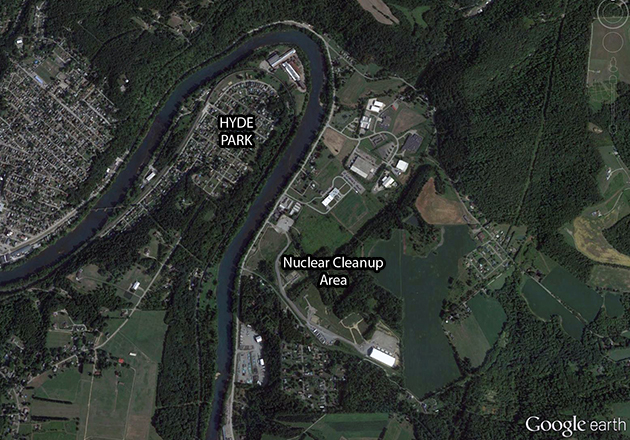Report Reveals a Lack of Records, Confirms that Previous Remediation Plan Significantly Underestimated Material Buried at Site / Casey Calls on NRC to Immediately Respond to Unanswered Questions about Oversight
Washington, DC- Today, U.S. Senator Bob Casey (D-PA) today released a report that he commissioned by the Nuclear Regulatory Commission’s Inspector General on the Shallow Land Disposal Area in Armstrong County. The report reveals a lack of records. The report also confirms that the previous remediation plan significantly underestimated the amount of material buried at the site. The NRC did not answer whether the government ensured compliance with decommissioning of the site. Senator Casey today called on the NRC General Counsel to provide a response immediately.
“This report confirms an abysmal lack of records and raises serious concerns about the NRC’s oversight of the SLDA,” said Senator Casey. “The NRC should immediately provide an answer as to whether the government met its obligation to ensure appropriate decommissioning of the site. The safety of my constituents is my top priority here. I will both demand accountability and push the Administration to expedite the clean-up of this site.”

Senator Casey’s letter to the NRC is below:
The Honorable Allison M. Macfarlane
Chairman
U.S. Nuclear Regulatory Commission
Dear Dr. Macfarlane:
I write to express my concerns regarding a nuclear waste disposal site in the Commonwealth of Pennsylvania that is currently undergoing remediation, the Shallow Land Disposal Area (SLDA) in Armstrong County. Waste from a nearby nuclear facility was historically disposed of in unlined trenches at the SLDA, purportedly in accordance with the regulations in place at the time. The U.S. Army Corps of Engineers (USACE) is currently in charge of the site, with the Nuclear Regulatory Commission (NRC) and other Federal partners providing technical consultation.
In a letter to the NRC Office of the Inspector General (OIG), dated June 27, 2012, I requested an investigation of NRC’s oversight of the remediation activities both before and subsequent to USACE involvement. On March 6, 2014, I received the investigation report from the OIG. The report provided an overview of NRC’s involvement with the SLDA and detailed responses to queries listed in my investigation request. The details of the OIG report and the history of the SLDA have raised significant concerns about the timely resolution of site remediation and the scope of the project. In my request to the OIG, I asked whether the NRC had properly required compliance with rules regarding the decommissioning of the site. I request that the NRC formally and expeditiously provide me with an answer to this question. Based on the report, I am concerned about the lack of records and indirect evidence that non-compliance may have occurred.
This prolonged process has been frustrating for my constituents. The OIG investigation indicated that although waste disposal at the SLDA site ended in 1970, it was not until 1993 that the NRC decommissioning process was formally initiated. Remediation of the site was still in the administrative approval process in 2001 when, in response to legislative action, responsibility for cleanup at the site was transferred from NRC to USACE. In August of 2011, USACE finally began on-site remediation but the work was terminated after one month due to contractor deviations from accepted field procedures and the discovery of material beyond the scope of the remediation plan.
Moreover, I am concerned about comments from former NUMEC staff referenced in the OIG report. A NUMEC scientist interviewed by OIG indicated that the estimate of nuclear material provided in the USACE Record of Decision was probably less than 5% of the material interred at the site. This scientist further noted that 233U and other radioactive materials were also buried at SLDA. Similarly, the OIG report cites comments from the NUMEC president stating that the available records grossly underestimate Special Nuclear Material buried at the site. The discovery of unanticipated 233U material at the SLDA site, leading to the halt in remediation activities, strongly supports the validity of these comments.
The OIG report also notes that NRC’s Office of the General Counsel has yet to determine if decommissioning requirements can be applied retroactively to the SLDA or whether the NRC has regulatory authority over a Formerly Utilized Sites Remedial Action Program (FUSRAP) site managed by the USACE. Note that the OIG report states that the 1988 amendments to the decommissioning criteria for nuclear facilities “included a requirement that licensees submit a ‘plan for completion of decommissioning if the plans for decommissioning have not been previously approved.’” I request that NRC make these determinations without further delay.
Although I appreciate that the history of the SLDA is complicated and that regulations governing decommissioning of nuclear facilities have changed dramatically since the SLDA stopped receiving waste, I am gravely concerned about the timely remediation of the site. Considering the long history of the site decommissioning effort, the potential presence of significant quantities of nuclear material, and contamination concerns for the surrounding community, it is imperative that remediation of the SLDA site is performed safely and efficiently.
The safety of my constituents is of paramount importance to me and the various issues raised by the OIG report underscore the need for a coordinated effort to remove materials from the site. Therefore, I urge the NRC to devote sufficient resources to the cooperative effort with the USACE in order to assure that the site is cleaned up in a timely manner. Also, please provide me with summaries of the NRC’s Office of General Counsel’s determinations on decommissioning requirements for the SLDA and regulatory authority for a FUSRAP site.
I appreciate your attention to this important matter.
Sincerely,
Robert P. Casey, Jr.
United States Senator
###
